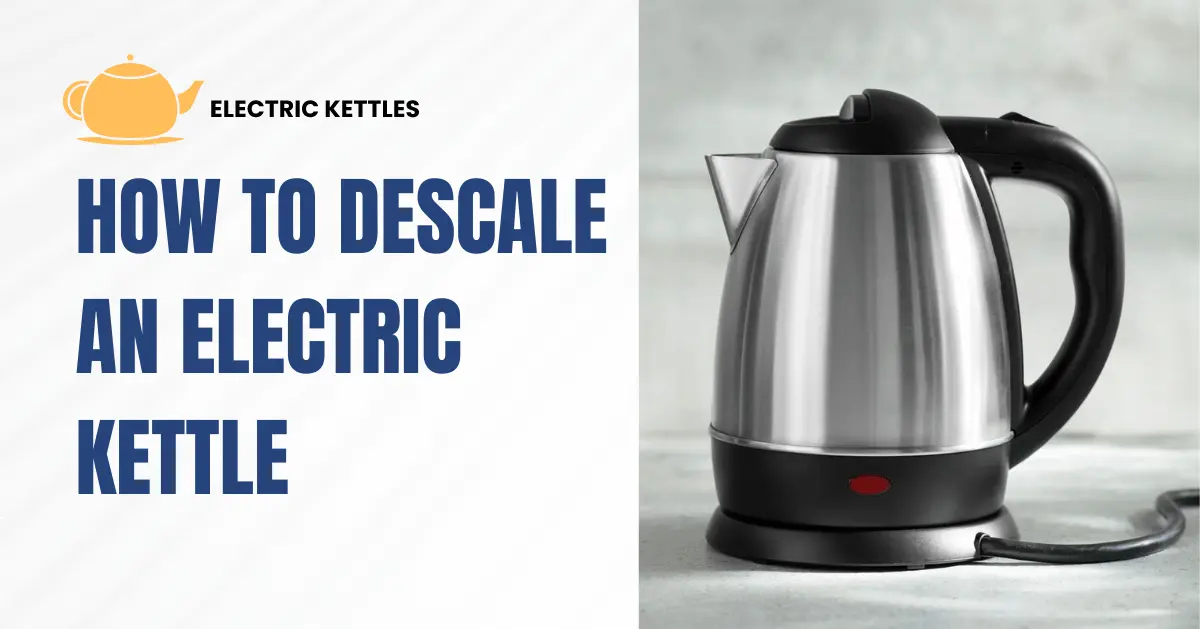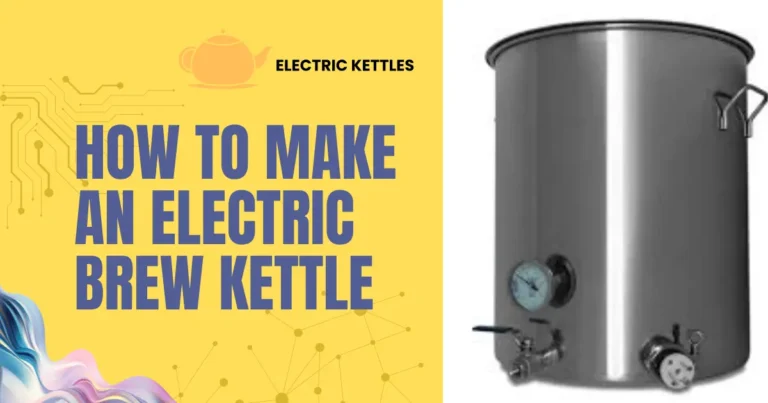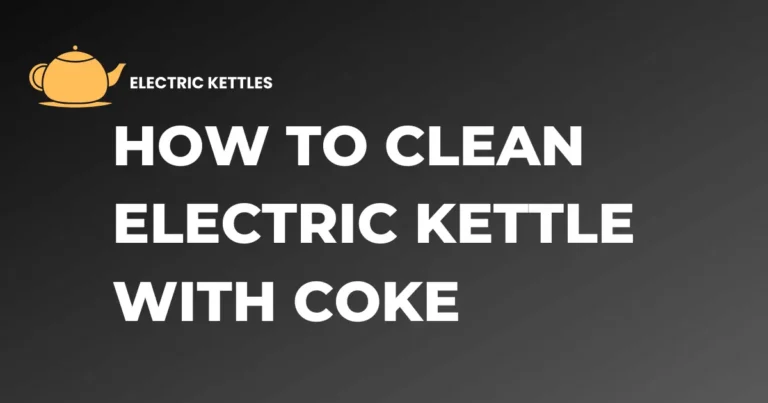How to Descale Electric Kettle
Descaling an electric kettle is crucial for its performance. Over time, mineral deposits from hard water, also known as limescale, can build up inside the kettle. This accumulation reduces the efficiency of the kettle, impacts the taste of your water, and, if ignored, can damage the heating element, shortening the kettle’s lifespan.
To maintain your kettle, it’s advisable to descale it every 1 to 3 months, depending on how often you use it and the hardness of your water. If you notice white flakes in the water or if your kettle is taking longer to boil, it’s time to descale. Regular descaling not only keeps your kettle functioning optimally but also ensures you always have fresh-tasting water.
When to Descale Your Electric Kettle
- Visible Limescale Build-Up: If you spot white, chalky residue inside the kettle, it’s limescale. This build-up happens when minerals from hard water accumulate. If not addressed, it will become thicker and harder to remove, eventually causing more harm to your kettle.
- Slower Heating Times: A noticeable delay in boiling water could be due to limescale. The mineral deposits form an insulating layer around the heating element, reducing its effectiveness. This not only consumes more energy but also decreases the kettle’s overall lifespan.
- Unpleasant Taste in Water: If the water tastes metallic, bitter, or off, limescale could be the reason. The minerals can alter the flavor of your water, making your tea or coffee taste less than ideal. Regular descaling helps maintain the purity of your water and the quality of your beverages.
- Noise During Boiling: If your kettle has become unusually noisy while boiling, it could be struggling with excess limescale. The build-up forces the heating element to work harder, leading to increased noise as it tries to heat the water evenly. If this happens, it’s a clear sign you need to descale.
How to Descale Your Electric Kettle
Before starting the descaling process, make sure the kettle is unplugged and empty. Allow it to cool down if it’s been recently used.
Method 1: Using a Vinegar Solution
Mix equal parts white vinegar and water, and fill the kettle halfway with the mixture. Plug in the kettle and bring the solution to a boil. Let it boil for a few minutes, then turn off the kettle and let the solution sit for 15 to 30 minutes. This gives the vinegar time to dissolve the limescale. Afterward, pour out the solution and rinse the kettle thoroughly with fresh water to remove any vinegar residue.
Method 2: Using Lemon Juice
If you prefer a more natural solution, use lemon juice. Mix it with water in a 1:2 ratio and fill the kettle halfway. Boil the mixture and let it sit for 30 minutes. The acidity of the lemon juice helps break down the limescale. Afterward, pour out the solution and rinse the kettle several times with fresh water to remove any lemon taste.
Method 3: Using Baking Soda
For those who prefer a different approach, baking soda can be effective. Create a paste by mixing a small amount of baking soda with water. Use a soft cloth or sponge to gently scrub the interior of the kettle, focusing on areas with visible limescale. Once done, rinse the kettle thoroughly with water. Then, fill the kettle with fresh water, bring it to a boil, and pour it out to ensure no baking soda residue remains.
After descaling, fill the kettle with clean water and boil it again to ensure that all cleaning agents have been removed. Once done, give the kettle a final rinse, and it should be ready to use.
Alternative Methods for Descaling
If you prefer not to use vinegar, lemon juice, or baking soda, there are several other methods to consider:
- Commercial Descaling Products: These products are designed specifically to remove limescale and are available in liquid, powder, or tablet form. They are often fast-acting and very effective, particularly for kettles with heavy build-ups. Just be sure to follow the instructions on the packaging.
- Citric Acid: Citric acid is a natural descaler that works similarly to lemon juice, but it’s typically more concentrated. Dissolve a tablespoon of citric acid in the kettle, fill it with water, and bring it to a boil. Let the mixture sit for 15-20 minutes, then pour it out and rinse the kettle thoroughly. Citric acid can be found in the baking aisle of most grocery stores.
- Descaling Tablets: Another convenient method is using descaling tablets. Simply drop a tablet into the kettle filled with water, bring it to a boil, and let it sit for the time recommended on the packaging. Once done, pour out the solution and rinse the kettle well. These tablets are often used for coffee machines and work just as well for kettles.
FAQs
Q. Is descaling safe for all types of kettles?
Yes, descaling is generally safe for most electric kettles. However, always check the manufacturer’s guidelines to confirm the best descaling method for your specific kettle.
Q. Can I use vinegar to descale a plastic kettle?
Yes, vinegar is safe for plastic kettles. Just be sure to dilute it with water and rinse thoroughly afterward to avoid any lingering vinegar smell.
Q. How do I know if my kettle has limescale?
Limescale appears as white, chalky deposits inside the kettle. If you notice these deposits or see flakes in your boiled water, it’s time to descale.
Q. Can I descale my kettle with soda or other soft drinks?
It’s not recommended. Soda and soft drinks contain sugars and acids that could leave behind residues or damage the kettle.
Q. What should I do if my kettle still has limescale after descaling?
If limescale remains, try repeating the descaling process with a stronger solution or using a commercial descaling product. In severe cases, contact the manufacturer for advice.
Conclusion
Descaling your electric kettle is essential for ensuring its efficiency and maintaining the quality of your water. Regularly removing limescale prevents it from affecting the heating process and extending the kettle’s lifespan. With methods like vinegar, lemon juice, or baking soda, you can keep your kettle clean and in optimal condition.
Pay attention to signs of limescale build-up and establish a regular descaling routine. Additionally, using filtered water and emptying the kettle after each use can help reduce future build-up. By following these simple tips, you can enjoy the benefits of a well-maintained kettle and great-tasting water every time.







